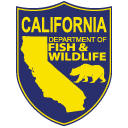In the summer of 2014, researchers wrapped up their projects determining the baseline conditions of southern California’s collection of marine protected areas (MPAs). With initial scientific baseline monitoring studies now completed, CDFW staff and partners plan to release baseline data and reports for the south coast MPAs in spring 2015. The baseline monitoring reports will be available to the public on the OceanSpaces website.
Baseline monitoring establishes a benchmark, or starting point, for both the ecological and socioeconomic conditions inside and outside of MPAs. These benchmark conditions provide the foundation to inform future management decisions for the south coast region, and to monitor MPA progress through time.
Extending from Point Conception (Santa Barbara County) to the California-Mexico border, including the Channel Islands, the south coast region encompasses nearly 2,351 square miles of state waters. The south coast contains 50 MPAs and 2 special closures that were implemented in January 2012, covering approximately 356 square miles or about 15 percent of the south coast.
After the south coast MPAs were implemented, ten projects were funded to conduct baseline monitoring. The baseline projects characterized a broad range of ecosystems including rocky intertidal, kelp forests, and sandy beaches. Additionally, surveys of human usage (such as fishing and wildlife viewing) were taken, waters deeper than 100 meters were studied via remotely operated vehicle surveys, and aerial surveys were conducted to map nearshore habitats. This initial work concluded in the summer of 2014. However, a final ongoing project was also funded to conduct an integrative assessment that studies the connections between the various monitoring results. The integrative assessment will help ensure a thorough characterization of the initial state of MPAs in the region.
Each principal investigator in charge of one of the baseline projects submitted a preliminary report detailing their findings on September 30, 2014. Following extensive peer review and revision, each report was resubmitted by January 31, 2015. After a final review by staff from the California Department of Fish and Wildlife, California Ocean Science Trust, California Ocean Protection Council, and California Sea Grant, the technical reports will be released to the public this spring. These reports, as well as the raw baseline data, will be posted online.
Creating California’s MPA Network – In December 2014, California celebrated the two-year anniversary of its redesigned coastal network of marine protected areas (MPAs), which is the largest scientifically designed network of MPAs in North America. In order to successfully achieve this redesign, California was split into five distinct regions: the north coast, north central coast, central coast, south coast, and San Francisco Bay. The south coast was the third region to have its existing collection of MPAs redesigned. Originally protecting just over 2 percent of state waters, the statewide network now protects approximately 16 percent, with approximately 8 percent of those waters within no-take marine reserves.
post by Amanda Van Diggelen, CDFW Environmental Scientist ♦ Marine Region GIS Lab map


